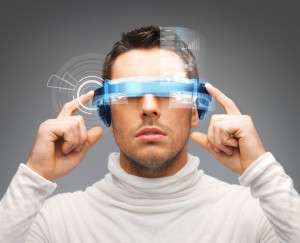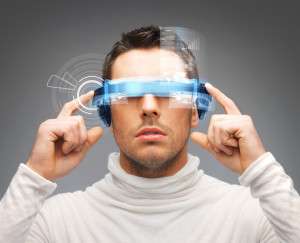Wearable technology, such as Google Glass and Epson Moverio, can be extremely useful in various medical and industrial sectors. Unfortunately, specific control-related issues prevent users from getting the most out of these devices. For instance, Google Glass can be controlled via both panel and voice commands. But that’s not necessarily a good thing. While panel commands are unable to deliver a true hands-free experience, Google Glass voice commands are not working properly, especially in noisy environments, which can lead to serious errors. On the other side, Epson Moverio can only be controlled via a touch sensitive trackpad, falling short of providing a real hands-free alternative to the Smartphone you already have in your pocket. But a new technology is about to change this.
Is the Myo Armband the Answer?
The Myo armband proposes a new wearable technology that promises to succeed where other devices have failed. Produced by Thalmic Labs, the Myo armband is able to combine gesture controls with a series of smart devices, including computers, drones, and digital glasses, ensuring the best possible outcomes in the workplace of the future.
This new device will soon be used together with different software solutions from Bridgit, Augmedix, APX Labs, and Recon Instruments in order to make possible various applications in the health care, manufacturing, logistics, construction, and gas and oil fields. It will also be used in extreme sports, complementing devices like Recon Jet heads-up display.
How Does the Myo Armband Work?
The Myo gesture armband controller is embedded with touchless gesture recognition software, which not only recognizes gestures, but also allows you to use the electrical activity of your muscles to control different smart devices wirelessly. This means that the Myo armband is a lot different from other devices, which typically use a camera to analyze users’ gestures and comply with their requirements.
Since there is no camera, Myo gives you the opportunity to control your digital environment with complete freedom of movement. Lack of restrictions has resulted from the initial concept behind this device, which focuses on allowing users to interact with wearable technologies in different environments where touch gestures or voice commands cannot be used. We’re going to see the benefits of using this device, especially in the enterprise sector, in the next coming months.
The Future of Wearable Technologies
Wearable technology applications crack open a new era, an era of endless possibilities. Imagine a heavy equipment repair technician being able to create 3D scans of different objects with Google Glass, then turning those scans by simply rotating the hand on which he wears the Myo armband. The technician may be able to identify specific problems without even testing the equipment. This not only saves companies a lot of time and money, but also minimizes the risk of workplace accidents. Myo can interact seamlessly with any devices as long as they have compatible software. This means that the worker of the future could connect to other devices and workers, regardless of circumstances.
With Myo and smart glasses, users will be able to access their PCs, laptops, or tablets to command content, videos, and presentations, make phone calls, or browse the Internet. Thus, the Myo armband offers a new, quite surprising way to interact with the devices we use on a daily basis. But what’s really great about this armband is that it detects movements so quickly that it seems to recognize gestures before even users complete their actions.
Though gesture control may be considered awkward right now, it has huge potential especially when combined with other wearable technology applications, such as smart glasses. And since the Myo armband depends upon getting the right applications built, the greatest opportunities for success lie in the enterprise field.
 Does Wearable Technology Hold The Future of ERP?">
Does Wearable Technology Hold The Future of ERP?">
